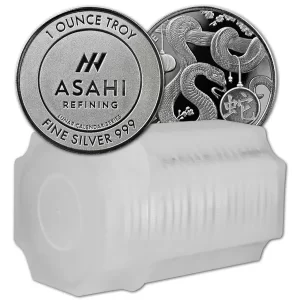Throughout history and still to this day, Gold is see as a sought-after precious metal. However, where there’s value, there’s often deception. The market is filled with counterfeit gold items, and many buyers have sadly been duped. Whether you’re an enthusiast, a collector, or an investor, it’s crucial to understand how to differentiate real gold from its fake counterparts.
Here’s how you can identify genuine gold:
-
Visual Inspection:
Colour: Real gold has a distinct golden color whereas counterfeit Gold can sometimes be too shiny or too dull. If you have never see real Gold before or not have a side by side comparison, this test may be difficult to judge. Not to worry, there are more tests!
Markings: Genuine gold jewellery or coins often have markings indicating their purity, such as ’10k’, ’14k’, ’18k’, or ‘999’ for pure gold. However, be cautious as fake items might also bear these marks.
-
The Magnet Test:
Gold is non-magnetic. If you place a strong magnet next to your gold item and it’s attracted, it’s likely not pure gold. However, this test alone isn’t definitive since other non-magnetic metals can be used in counterfeits.
-
The Float Test:
Drop the gold item into a container of water. Genuine gold is dense and will sink, while most fake gold items will float. But be wary, as some denser alloys may also sink.
-
Ceramic Test:
Rub the gold piece on a piece of unglazed ceramic. If it leaves a gold streak behind, it’s likely genuine. If it leaves a black streak, it might be plated or fake.
-
Size and Weight:
Gold has a specific density, and any deviations can indicate impurities. Weigh the item and compare it to its expected weight. Also, fake gold coins might be thicker or have diameter discrepancies.
-
Nitric Acid Test:
This is one of the most reliable tests but should be done cautiously. Apply a drop of nitric acid to an inconspicuous part of the gold item. Genuine gold won’t react, while many fake gold items will turn green.
Note: Using nitric acid can be hazardous and might damage the item if it’s not pure gold. It’s best to let professionals conduct this test.
-
Professional Appraisal:
If you’re still uncertain or dealing with a valuable item, it’s wise to get it appraised by a reputable precious metals dealer. They have tools and expertise that can provide a definitive answer.
-
Sound Test:
Genuine gold coins emit a distinct ‘ping’ sound when struck. If you tap the coin with another coin or metal object, listen carefully. Fake gold might produce a duller, clinking sound.
-
Texture and Edges:
Real gold coins have soft edges and a smooth texture. If you notice any unevenness or sharp edges, you might be dealing with a counterfeit.
-
Documentation:
If purchasing gold, always ask for documentation or certificates of authenticity. While paperwork can also be faked, it adds an extra layer of assurance.
Final thoughts
While these methods provide valuable insight, no single test is foolproof. Combining multiple tests can give you a clearer picture of your item’s authenticity. Always remember, when in doubt, consult a professional. This is another reason to avoid making large purchases from unverified sources, and purchase your precious metals from an Authorized precious metals retailer like AU Bullion. As an authorized Bullion DNA Dealer of the Royal Canadian Mint, we strive towards giving customers a safe and memorable Gold buying experience. Be sure to stay educated to ensure your gold is genuinely golden!

 Hi,
Hi,






















